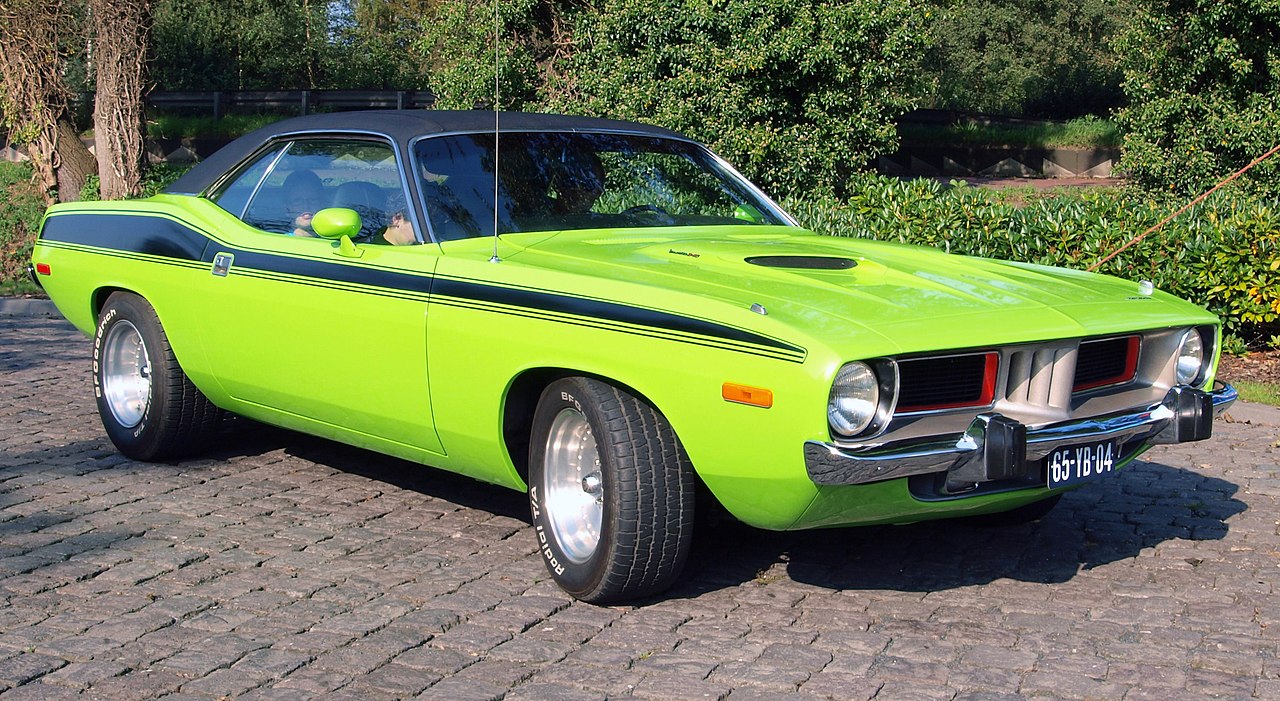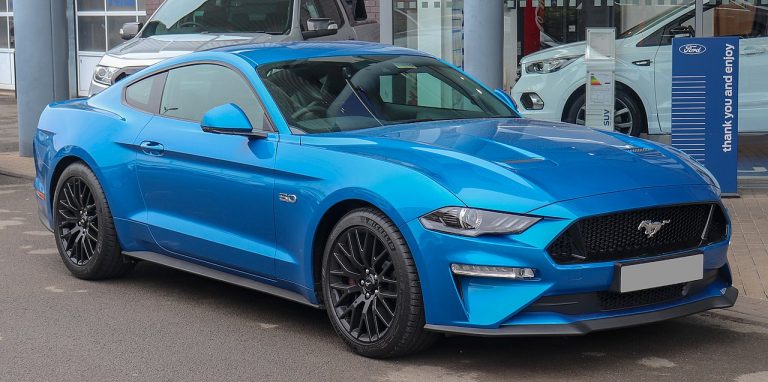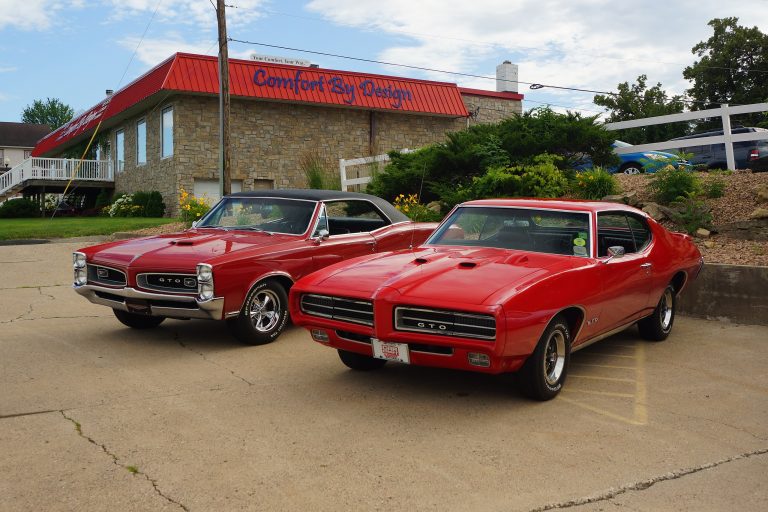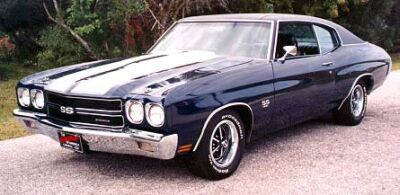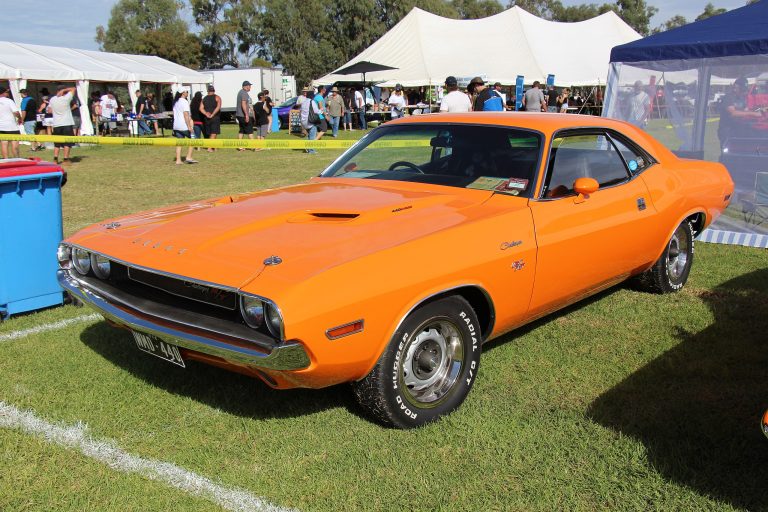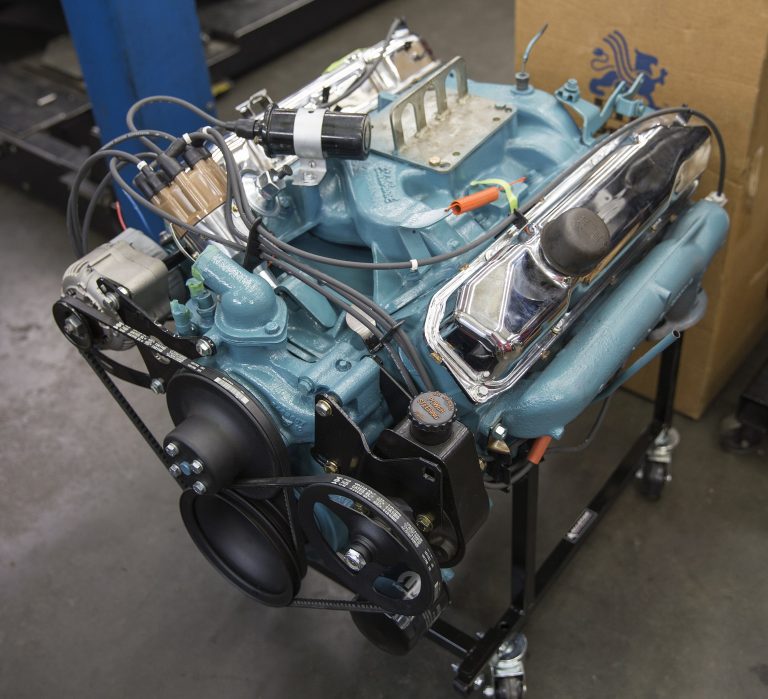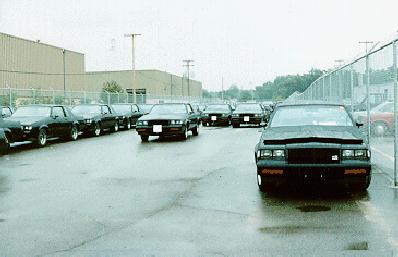Plymouth Barracuda

Meet Chandler
Chandler has a bachelors and masters degree in history as well as a passion for classics and muscle cars. His education and historical knowledge makes him skilled at crafting highly detailed articles about America’s muscle cars and automotive history. His love of muscle cars is undeniable, with him seeking them out at every opportunity during his visits to auto shows and car meets. Chandler’s knowledge and enthusiasm towards automotive history make him a great asset to the Muscle Car Club community.
Looking back today, the Plymouth Barracuda was one of the ultimate pony cars of the 1960s and 1970s. While the first generation was relatively forgettable, the second and third generations got the Chrysler big-block V8s, and they could seriously turn heads. The 426 HEMI and 440 Super Commando powered Barracudas straddled the line of pony car/muscle car, and today are some of the most sought out vehicles from the era of the horsepower wars for collectors. In particular, the HEMI 426s from 1970–1971 are extremely valuable and rare.
Unfortunately, the Barracuda was not long for this world, and 1974 was its last model year. By then, the Barracuda was only a shell of its former self, completely emasculated by increasing emissions restrictions and new horsepower ratings. Still, for a time the Plymouth Barracuda was one of the hottest models available in the Chrysler/Plymouth lineup.
In particular, the one year only 1970 AAR ‘Cuda is one of the most legendary cars of the decade. It was the homologated version of Dan Gurney’s All American Racers (AAR) ‘Cuda, which the team ran in the 1970 Sports Car Club of America’s Trans-Am racing series. The AAR ‘Cuda featured a small-block 340 engine equipped with three-double-barrel carburetors, known as the 340 six-pack (or 340+6). Today, they are some of the most collectible Barracudas, going for well over $200,000 for a well maintained version.
Plymouth Barracuda Overview
Plymouth produced the Barracuda for 11 model years, from 1964–1974. Its direct competitors were first the Ford Mustang and later the Chevrolet Camaro and Pontiac Firebird. The first generation lasted from 1964–1966 and was originally known as the Valiant Barracuda. It used the same Chrysler A-body platform but was a two-door hardtop-fastback design. At this stage, the Barracuda was more of a budget car, which Plymouth built for convenience and reliability, not performance.
The second generation of the Plymouth Barracuda lasted from 1967–1969, and was a full redesign. In addition to the fastback, Plymouth made notchback and convertible models of the Barracuda available for the first time. In 1969, they introduced the ‘Cuda option package for those needing ultra high performance. This generation saw the Barracuda transform from a convenient efficient pony car to a sporty performance oriented pony car. By the end of the generation, Plymouth finally gave them big-block V8s, which transformed sine of them into muscle cars.
The third and final generation of the Barracuda lasted from 1970–1974, and saw the Barracuda at its best and its worst. For starters, it saw a complete redesign, switching from the Chrysler A-body to the E-body, the same platform as the Dodge Challenger. For 1970–1971, Chrysler finally put the 426 HEMI inside the engine with 425 horsepower, making them the most powerful Barracudas ever.
However, starting in 1972 the Barracuda suffered the fate of other iconic ‘60s pony and muscle cars: A slow death. Emissions restrictions and fuel economy concerns prompted the big-block V8s to be dropped, scuttling performance. The last year of the Plymouth Barracuda was 1974, and by then it was selling poorly and only a shell of its former self.
First Generation Plymouth Barracuda

The first generation of the Plymouth Barracuda lasted from 1964–1966. The 1964 Plymouth Barracuda was essentially a fastback version of the Plymouth Valiant (similar to the Ford Mustang and the Ford Falcon on which it was based), and it was actually marketed as the Plymouth Valiant Barracuda initially. It used the same wheel base dimensions and Chrysler A-body platform, but with a massive wraparound rear window and taillight.
Though it would later become a top pony car and when equipped with the 426 or 440 V8s one of the most feared muscle cars of the era, Plymouth originally had other ideas for the Barracuda. They marketed it as being comfortable, reliable, and convenient, in contrast to the Mustang’s sporty branding. There was the Formula-S option package beginning for 1965, which added some performance, but overall the Barracuda was focused on being a budget family compact.
The 1966 Plymouth Barracuda was given a minor facelift, mainly with the taillights and grille. Also, Barracuda emblems resembling the fish were added and would last until 1970. By 1966, the Valiant name was largely dropped and the car was simply known as the Plymouth Barracuda. For the first generation, Plymouth only made the Barracuda as a fastback model, though convertibles would follow later.
First Generation Engine Technical Specifications
| Model Years | Engine | Horsepower | Torque |
| 1964-1965 | 170 cid Slant-6 | 101 horsepower | 155 lb-ft |
| 1964-1966 | 225 cid Slant-6 | 145 horsepower | 215 lb-ft |
| 1964-1966 | 273 cid V8 (2bbl) | 180 horsepower | 260 lb-ft |
| 1965-1966 | 273 cid V8 (4bbl) | 235 horsepower | 280 lb-ft |
First Generation Engines, Transmission Options, and Performance
For the inaugural year of the Barracuda, Plymouth gave it three options: A 170 cid slant-6, a 225 cid slant-6, and a 273 cid V8. The 170 slant-6 made 101 horsepower, the 225 slant-6 made 145 horsepower, and the 273 V8 made 180 horsepower. Both the six-cylinders had standard carburetors, while the 273 had a double-barrel. The following year in 1965, Plymouth added a four-barrel carburetor version of the 273 V8, which upped power to 235 horsepower.
The quad-barrel was known as the 273 Commando, and had a higher compression ratio and more aggressive camshaft. It was only available in the Formula S sport package. The package also included upgraded suspension, bigger tires, and a tachometer. For all Barracudas, there were three transmission options available. You could get either a three or a four-speed manual transmission, or you could get a three-speed automatic TorqueFlite transmission.
For 1966, Plymouth dropped the 170 slant-6 from the lineup, leaving the 225 and both the double and quad-barrel 273 V8s. At this point, it’s hard to argue the Barracuda was much of a performance based car. According to Car and Driver, the quad-barrel 273 V8 Barracuda went from zero to 60 mph in 9.1 seconds. It took 17.6 seconds @ 81 mph to get through the quarter mile.
First Generation Plymouth Barracuda Production Numbers
| Model Year | Engine Type | Production |
| 1964 | Six-Cylinders | 2,647 |
| V8 | 20,796 | |
| 1964 Total | 23,433 | |
| 1965 | Six-Cylinder | 24,758 |
| V8 | 39,839 | |
| 1965 Total | 64,596 | |
| 1966 | Six-Cylinder | 16,506 |
| V8 | 21,523 | |
| 1966 Total | 38,029 |
Things started decently for the 1964 Plymouth Barracuda, before seeing a sharp increase in sales for the ‘65 Barracuda. The 1966 Plymouth Barracuda saw a drop-off from the year prior, though sales were still decent. The V8 was always the more popular power plant, however the six-cylinder quickly gained ground. Still, when compared with its rival the Ford Mustang, Barracuda total output was miniscule — at maybe 10% of the Mustang.
Second Generation Plymouth Barracuda

The second generation of the Plymouth Barracuda kicked off in 1967 and ended in 1969. The Valiant moniker had been dropped partway through 1966, so by 1967 the car was just sold as the Barracuda. Plymouth gave the car a styling redesign, adding notchback and convertible body styles to the still available fastback. They made the wheelbase smaller, but it was still on the Chrysler A-body platform. The massive wraparound rear window and taillight were removed, and the front and rear ends were extensively revised.
Due to increasing federal safety standards, new headlight and taillight designs were implemented throughout the generation. For the 1969 Plymouth Barracuda, the mod top vinyl roof covering became an available option. For the second generation, the Formula S option was continued. From 1967–1968, it could be had with either the small-block 273 V8 or brand new big-block 383 V8.
In 1969, the Formula S options were either the 340 or 383 V8s. Interestingly, all 340 Barracudas that year had the 340-S emblem, making it hard to distinguish a 340 standard from a Formula S. Also in 1969, Plymouth introduced the ‘Cuda option package, which was similar to the Formula S. The ‘Cuda option could be had with either the 340, 383, or 440 V8s, and included dual exhausts, upgraded suspension, and better brakes and tires.
Second Generation Engine Technical Specifications
| Model Years | Engine | Horsepower | Torque |
| 1967-1969 | 225 cid Slant-6 | 145 horsepower | 215 lb-ft |
| 1967 | 273 cid V8 (2bbl) | 180 horsepower | 260 lb-ft |
| 1967 | 273 cid V8 (2bbl) | 235 horsepower | 280 lb-ft |
| 1968-1969 | 318 cid V8 (2bb) | 230 horsepower | 320 lb-ft |
| 1968-1969 | 340 cid V8 (4bbl) | 275 horsepower | 340 lb-ft |
| 1967 | 383 cid V8 (4bbl) | 280 horsepower | 400 lb-ft |
| 1968 | 383 cid V8 (4bbl) | 300 horsepower | 400 lb-ft |
| 1969 | 383 cid V8 (4bbl) | 330 horsepower | 425 lb-ft |
| 1969 | 440 cid V8 (4bbl) | 375 horsepower | 480 lb-ft |
Second Generation Engines, Transmission Options, and Performance
For the first year of the second generation Barracuda, Plymouth carried over the same three engine options (225 slant-6, 2bbl 273 V8, 4bbl 273 V8). Yet, they also added the new big-block 383 cid V8, too. This was a slightly modified version of the standard Chrysler 383 Golden Commando, with more restrictive exhaust manifolds, due to limited engine space. Still, it made 280 horsepower. Also due to the limited space, the second generation 383 powered Barracudas did not have power steering, which made handling rough.
For the 1968 Plymouth Barracuda, Chrysler kept the 225 slant-6, but they dropped the 273 V8 and added small-block 318 cid and 340 cid V8s. The 318 V8 had a double-barrel carburetor and made 230 horsepower, while the larger 340 V8 used a quad-barrel carburetor and made 275 horsepower. In addition, Plymouth increased power on the larger big-block 4bbl 383 Golden Commando V8, pushing it out to 300 horsepower flat.
For the final year of the second generation in 1969, Plymouth kept the 225 slant-6 and small-block V8s the same, but again added power to the 383. The 383 Golden Commando now made 330 horsepower and 425 lb-ft of torque. Also for 1969, Plymouth added the 440 Super Commando V8 as a factory option. The 440 Super Commando made an incredible 390 horsepower and 480 lb-ft of torque, and used a four-barrel Carter AVS carburetor
Once again, for all Barracudas there were three transmission options available. You could get either a three or a four-speed manual transmission, or you could get a three-speed automatic TorqueFlite transmission.
Second Generation Plymouth Barracuda Production Numbers
| Model Year | Bodystyle | Production |
| 1967 | Notchback | 28,196 |
| Fastback | 30,110 | |
| Convertible | 4,228 | |
| 1967 Total | 62,534 | |
| 1968 | Notchback | 19,997 |
| Fastback | 22,575 | |
| Convertible | 2,840 | |
| 1968 Total | 45,412 | |
| 1969 | Notchback | 12,757 |
| Fastback | 17,788 | |
| Convertible | 1,442 | |
| 1969 Total | 31,987 |
1967 saw a rebound from the prior year, with the new notchback outselling the fastback. The convertibles were never very popular, making up only a fraction of the Barracudas each year. Sales declined each year from a high in 1967, proving just how uneven the Barracuda was with buyers.
Third Generation Plymouth Barracuda
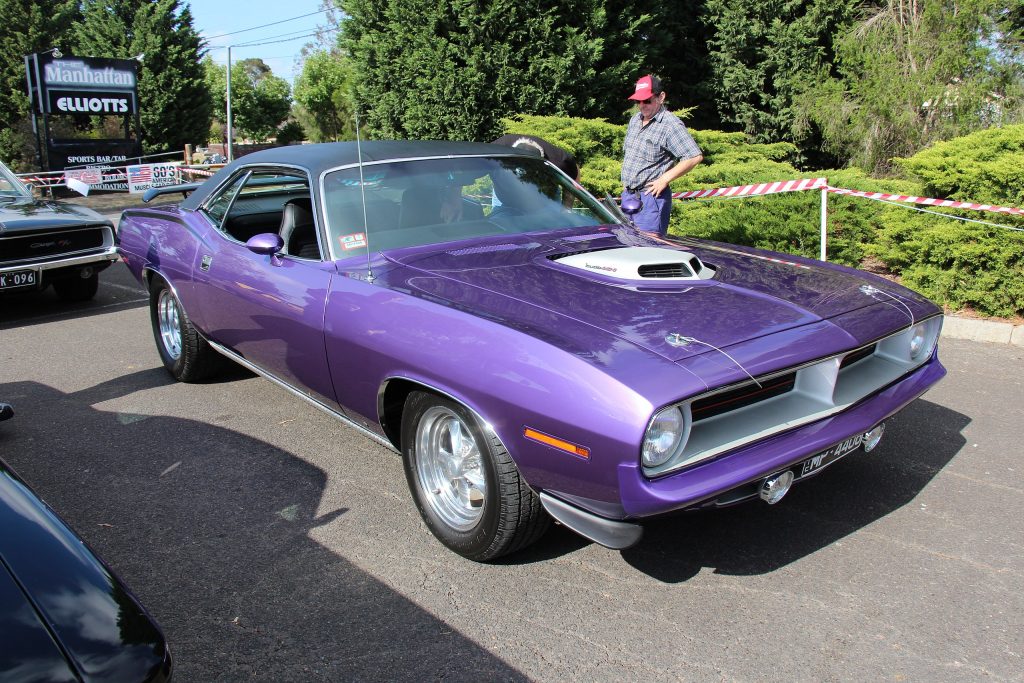
The third generation of the Plymouth Barracuda lasted from 1970–1974, and was the final one. For the first two years, the Barracuda was all about performance. The focus was now squarely on horsepower over efficiency and comfort. As a result, the A-body was ditched in favor of a slightly smaller version of E-Body that Dodge Challenger used. Compared with the previous generation, the engine bay was much bigger, making big-blocks easier to put in.
There were three trims for the 1970 Plymouth Barracuda. There was the base, Gran Coupe, and the ‘Cuda – the last of which was now its own model rather than just an option package. The ‘Cuda was the performance model while the Gran Coupe was considered the luxury model. Gone was the Formula S option and the fastback design, and hardtop coupes and convertibles were the only body styles available. New on the 1970 ‘Cuda models was a shaker hood scoop. The shaker hood scoop, which was functional unlike the non-functional scoops on the standard hoods, got its name because it was attached to the engine and would move (or shake) when the engine came under load.
The 1971 Plymouth Barracuda model had further revised styling which included quad-segmented headlights, dummy front fender vents, and segmented tail lights. It also had the famous “Barracuda Grille,” which was designed to look like teeth from the barracuda fish. The next year, however, the headlights were revised again to just two, and new bumpers were added to comply with federal safety regulations.
More Changes For 1972
For the 1972 Plymouth Barracuda, the Gran Coupe model was discontinued, leaving only the base and the ‘Cuda models. Plymouth also dropped the convertible bodystyle that year in all models after previously ditching it in the Gran Coupe the year prior, leaving only the hardtop for 1972-on. For the most part, with the exception of new rubber bumper guards for the 1973 Plymouth Barracuda, styling would remain the same until its end in 1974.
Third Generation Engine Technical Specifications
| Model Years | Engine | Horsepower | Torque |
| 1970-1971 | 198 cid Slant-6 | 125 horsepower | 180 lb-ft |
| 1970-1971 | 225 cid Slant-6 | 145 horsepower | 215 lb-ft |
| 1970-1971 | 318 cid V8 (2bbl) | 230 horsepower | 320 lb-ft |
| 1970-1971 | 340 cid V8 (4bbl) | 275 horsepower | 340 lb-ft |
| 1970 | 340+6 cid V8 | 290 horsepower | 345 lb-ft |
| 1970 | 383 cid V8 (2bbl) | 290 horsepower | 390 lb-ft |
| 1970 | 383 cid V8 (4bbl) | 330 horsepower | 425 lb-ft |
| 1970 | 383 cid V8 (‘Cuda) | 335 horsepower | 425 lb-ft |
| 1970 | 440 cid V8 (4bbl) | 375 horsepower | 480 lb-ft |
| 1970 | 440+6 cid V8 | 390 horsepower | 490 lb-ft |
| 1970-1971 | 426 cid HEMI V8 | 425 horsepower | 490 lb-ft |
| 1971 | 383 cid V8 (2bbl) | 275 horsepower | 375 lb-ft |
| 1971 | 383 cid V8 (4bbl) | 300 horsepower | 410 lb-ft |
| 1971 | 440+6 cid V8 | 385 horsepower | 490 lb-ft |
| 1972 | 225 cid Slant-6 | 100 horsepower | 160 lb-ft |
| 1972-1974 | 318 cid V8 | 150 horsepower | 260 lb-ft |
| 1972-1973 | 340 cid V8 | 240 horsepower | 290 lb-ft |
| 1974 | 360 cid V8 | 245 horsepower | 320 lb-ft |
Third Generation Engines and Performance
The best year as far as power plants are concerned was definitely the 1970 Plymouth Barracuda. That year, there were a whopping 11 different engine/power combinations available. On the lower end were the 198 cid and 225 cid slant-6s, with the small-block 318 and 340 V8s still available. In addition, there was also the 340 six-pack (340+6) that was only available in the 1970 ‘AAR Cuda. The 340 six-pack was a slightly reinforced version of the standard 340 with a modified block, and used three-double-barrel carburetors – known as a six-pack. Plymouth increased power on the 340+6 to 290 horsepower, up from 275 horsepower on the standard 340.
There were also three different big-blocks available for 1970: The 383 Golden Commando, 426 HEMI, and 440 Super Commando. The Golden Commando could be had in either 290 or 330 horsepower versions, or with 335 horsepower inside the ‘Cuda. The 426 HEMI made the most of any engine at 425 horsepower and 490 lb-ft of torque. Slotting between the 383 Golden Commando and 426 HEMI power-wise was the 440 Super Commando and 440 six-pack. The 440 Super Commando pumped out 375 horsepower, while the 440+6 made 390 horsepower.
For the 1971 Barracuda, Plymouth dropped the 340 six-pack, 335 horsepower 383 Golden Commando, and the 440 Super Commando. In addition, power dropped slightly on both the remaining 383 and 440+6 big-blocks.
The Decline of Barracuda Performance
The last true year for performance on the Barracuda was 1971, after which emissions restrictions and fuel economy concerns prompted massive changes. For 1972, every single big-block option was eliminated, as well as the smallest 198 cid slant-6. This left only the 225 slant-6 and the 318 and 340 V8s as available engine options, and all of them were detuned from the year prior.
In addition, in 1972 Plymouth switched from SAE Gross to SAE Net horsepower ratings, which made power seem even lower than it was. For example, in 1971 the 383 V8 that made 300 horsepower and 410 lb-ft of torque Gross, made only 250 horsepower and 325 lb-ft of torque Net. Likewise, the same year 340 V8 rated at 275 horsepower and 340 lb-ft, was now rated at 235 horsepower and 310 lb-ft Net.
For 1972, the 225 slant-6 made 100 horsepower and the 318 V8 150 horsepower, leaving the most powerful choice as the 340 V8 at just 240 horsepower (all SAE Net). The slant-6 was dropped for 1973, and in 1974 the 340 was dropped. In its place for the final 1974 model year was the small-block 360 V8, making 245 horsepower and 320 lb-ft of torque.
Third Generation Barracuda Production Numbers
| Model Year | Bodystyle | Production |
| 1970 | Base Hardtop | 25,651 |
| Base Convertible | 1,554 | |
| Gran Coupe HT | 8,183 | |
| Gran Coupe CV | 596 | |
| Cuda Hardtop | 18,880 | |
| Cuda Convertible | 635 | |
| 1970 Total | 55,499 | |
| 1971 | Base Hardtop | 9,459 |
| Base Convertible | 1,014 | |
| Gran Coupe HT | 1,615 | |
| Gran Coupe CV | 0 | |
| Cuda Hardtop | 6,228 | |
| Cuda Convertible | 374 | |
| 1971 Total | 18,690 | |
| 1972 | Base Hardtop | 10,622 |
| Cuda Hardtop | 7,828 | |
| 1972 Total | 18,450 | |
| 1973 | Base Hardtop | 9,976 |
| Cuda Hardtop | 9,305 | |
| 1973 Total | 19,28f1 | |
| 1974 | Base Hardtop | 6,745 |
| Cuda Hardtop | 4,989 | |
| 1974 Total | 11,734 |
The 1970 Plymouth Barracuda started strong, with an increase of more than 20,000 units over the year prior. Unfortunately, that was merely a one year illusion, as 1971 and 1972 saw the Barracuda fall back down to earth with the worst sales since it had come out in 1964. There was a brief resuscitation in the 1973 Plymouth Barracuda where production slightly increased, before bottoming out in the 1974 Barracuda.
By then, the Barracuda was no longer a muscle car and could barely qualify as a “sporty” pony car. Performance was gone with the big-blocks, and soon Plymouth did not deem the Barracuda worthwhile to continue production on. Its 1974 swansong was a sad end to what was previously one of the more intriguing options in the Chrysler/Plymouth lineup.
Plymouth Barracuda Legacy
Today, the Plymouth Barracuda stirs up feelings about what could have been. The first generation was fine, as a compact tourer, but was far away from the heights the car would achieve years later. The second generation saw the introduction of the big-block engine and an increased focus on performance, which was carried over to begin the third generation.
At its peak in 1970, the Barracuda was the ultimate pony car and muscle car, depending on which engine you got. The 340+6 equipped ‘AAR Cuda is still considered one of the best pony cars of the era, and very few things will ever top a 426 HEMI powered ‘Cuda muscle car. The 440+6, 440 Super Commando, and 383 Golden Commando powered Barracudas were no joke either, and produced enviable performance.
Unfortunately, the peak of the Barracuda lasted barely one year, because as early as the next year Plymouth was already detuning the 383 and 440+6 powered Barracudas to meet emissions compliance and removing engine options. By 1972, the Barracuda was just another Plymouth, and enthusiasm waned so much it was canceled two years later.
If Plymouth had put the attention into the Barracuda they did from 1969–1971 from the beginning, who knows how incredible it could have become. Still, its three year peak highlighted by the ultimate 1970 Plymouth Barracuda, was absolutely incredible and produced some fantastic machines. Maybe one day Chrysler (Stellantis) will bring back the Barracuda as a return to pony car glory. At least we can only hope.
* Thank you to PlymouthBarracuda.Net and Mopar1.us for production number information.

